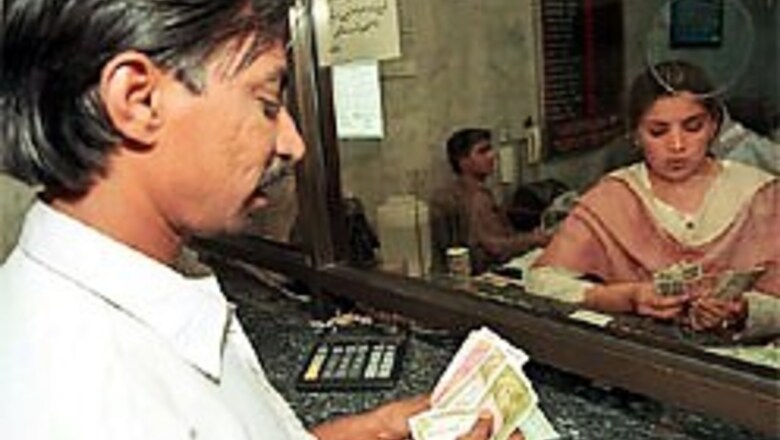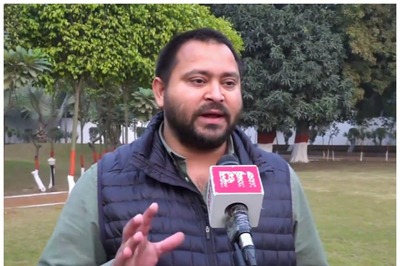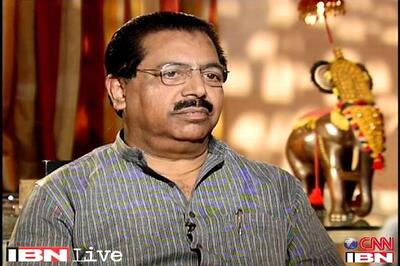
views
Most of the people relish colas and I have seen people giving their two-three year olds these Thande ka Tadka or Yeh Dil Mange More drinks. Now there is an ongoing debate in the industry on the safety of colas.
This has been after the Centre of Science and Environment released its report on the high pesticide levels in these drinks. Some of the states have banned colas; some are yet to take any action and so on.
I read comments from industry folks that the government should prescribe guidelines for pesticide levels.
The question is why drink something, which has pesticide in it at all? Isn’t it like we are paying to feed our children with pesticides, however small the quantity may be? By merely saying that other items also contain pesticides does not, in any manner, make Colas safe...
No, I am not doing a cola bashing here, though I would love to, the point that I am trying to get across is how skewed is our thought process on risk. Most of the people have taken far more risk in their life than they would like to believe. Knowingly or unknowingly, we tend to take far many financial and non-financial risks in life.
This brings me to my key point that ‘risk comes from not knowing what you are doing’. This was quoted by the legendary Warren Buffet. The brilliance of this statement is that it is applicable to just about anything you do in life. The objective of this article is to give investors a framework on understanding risk and its application, in making prudent economic decisions.
I hear a lot of people saying that we are conservative and we do not like to take a risk, when it comes to equity investments. This conservatism is evident from the huge amounts put away every year in fixed deposits, post office schemes, and bonds. Some industry figures quote that 1.8 per cent of the Indian population has invested in equity.
There are various perceptions that we hold about several things and part of it has to do with our background, experience, and education, but for most of the people it's just hearsay.
There is no risk-free investment. It’s just that different types of investments are exposed to different types of risk. For instance, sovereign debt is one that is guaranteed by the government (RBI Bonds, Post Office Schemes, Public Provident Fund (PPF), Senior Citizens Scheme etc.), and fixed deposits (FDs) might make people believe that their capital is safe.
But these instruments are exposed to several risks, the biggest of them being inflation risk (also known as purchasing power risk), reinvestment risk, interest rate risk. Besides this, the risk of lost opportunity, the risk of not achieving your financial goals, the risk of outliving your money and so on.
PAGE_BREAK
Before I proceed, I wish to share the context in which one should view risk. Risk should be viewed as the possibility that actual return can be different from the expected return. People who invested in PPF in the year 2000 at 12 per cent with the expectation that PPF would continue to give 12 per cent were in for a rude shock, when interest rates on PPF came down from 12 per cent to 11 per cent and now is 8 per cent.
This is a form of ‘Interest Rate Risk’. Interest rate risk is one, which most of the investors in fixed deposits (FDs) or debt mutual funds have found out. When interest rates rise, NAV (net asset value) of debt funds fall, as there are higher interest rate instruments available making older investments less desirable. Similarly, people locked in a 6.5 per cent FD for 3 years, now find out that there are fixed deposits launched by banks such as Bank of India, offering 9 per cent interest rate.
A double whammy of interest rate risk and re-investment risk is when a person who had invested in the year 2000 in a fixed deposit at 11 per cent renews his FD in 2005 at 6.5 per cent as his income is cut by almost 50 per cent. How does one address this?
‘Purchasing power risk’ and ‘outliving your money’ are the biggest risks that most individuals face. You do not see these risks but you can only feel them when they have done a lot of damage. Imagine, a family needs Rs 30,000 per month as per their current lifestyle, after taxes. At an inflation of 6 per cent in 15 years, the same family will need around Rs 71,896 to maintain their lifestyle. However, an investment in a fixed deposit at 7 per cent pre-tax (and post tax 4.9%) would see their Rs.30,000 grow to Rs 61,482. The family is short by approximately Rs 10,000 or 14.48% and will have to curtail its lifestyle. (Profile your risk capacity and your risk tolerance for financial planning.
We need to analyze the above before coming to the conclusion that debt investments are risk-free.
PAGE_BREAK
Most people believe that real estate is fraught with no risks. Nothing could be further from the truth. Real estate transactions are fraught with several risks like liquidity, market risk (risk that prices might go down), maintenance risk and completion risk, better known as construction delays to name a few.
One investor I know, had bought an under-construction property due for possession in 2005. He has still not got possession. Imagine the impact of this on his personal finance - he has to pay rent as well as EMIs (equated monthly installment). If you give the apartment on rent, then tenancy risk also comes into play.
Lastly, we come to stocks and mutual funds. They are subject to market risk and can swing in both directions wildly in the short term. The short-term average and volatility is taken by investors to be a long-term trait of equities and generally equated with risk. However, in the long term - of say around 10, 20 or 30 years, equities are one of the safest investments to make in terms of protecting your lifestyle and growing your wealth. Debt mutual funds on the other hand are subject to interest rate risks like I mentioned above.
To sum up, all investments are exposed to different kinds of risk and all types of investments play an important part in our portfolios. Cash, fixed deposits, floating rate funds are short-term instruments and should be used as such. Real estate and equities are long-term investments and should be used for long-term goals only. The mismatch happens when you put money that you need back, in one-two years in equities.
We all have seen several investors calling CNBC-TV18 and asking for investment tips and calls with a time horizon of two-three months, and there are an equal number of people willing to oblige with so-called wisdom! Any money you need in the next 12 months, should always be in your savings account, fixed deposits, floating rate funds and so on. Similarly, any money you do not need in the next 15 years, should be in equities. If you fail to follow these cardinal rules, you have no one else but yourself to blame.
The author, Amar Pandit, is a practising Certified Financial Planner and runs “My Financial Advisor“ www.myfinad.com.




















Comments
0 comment